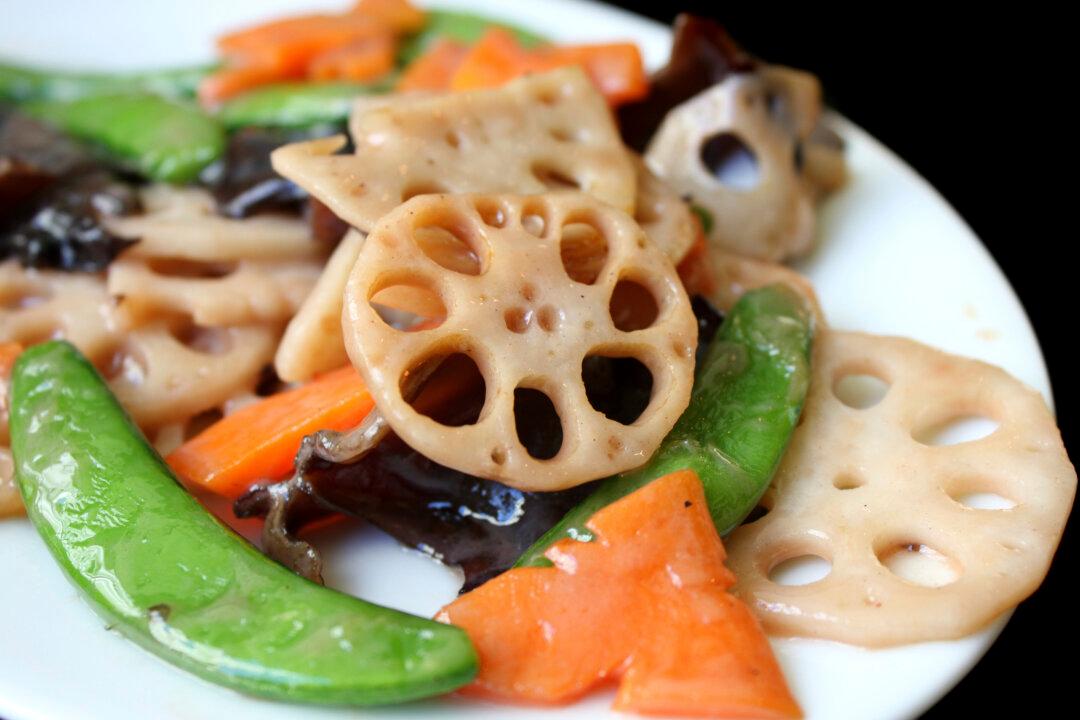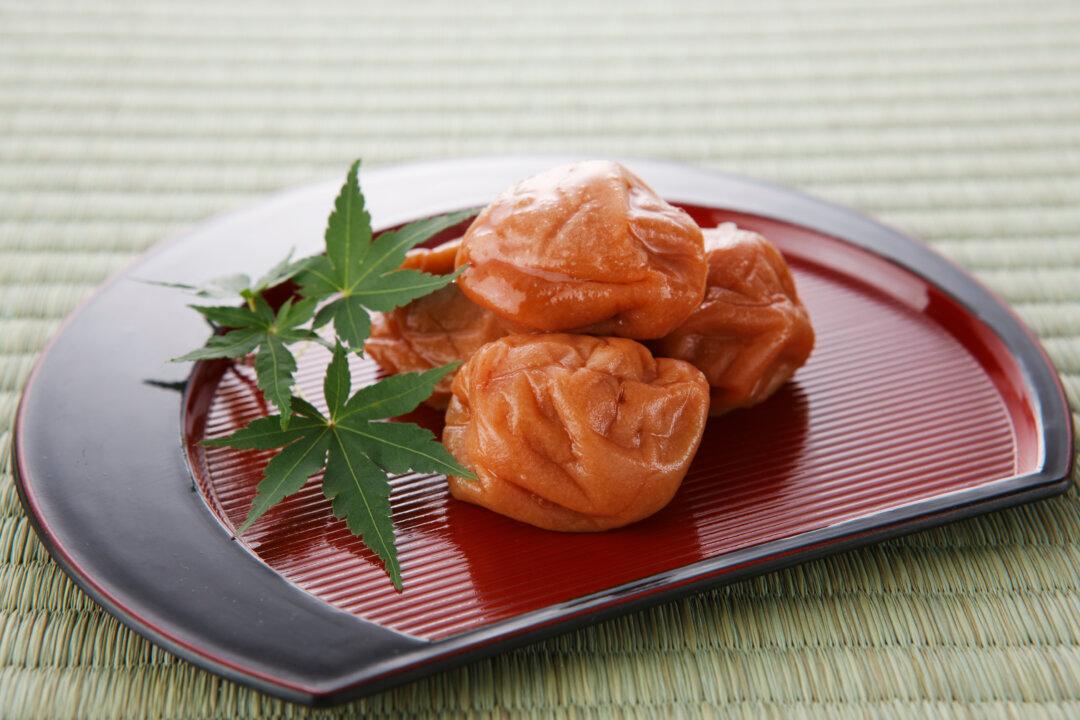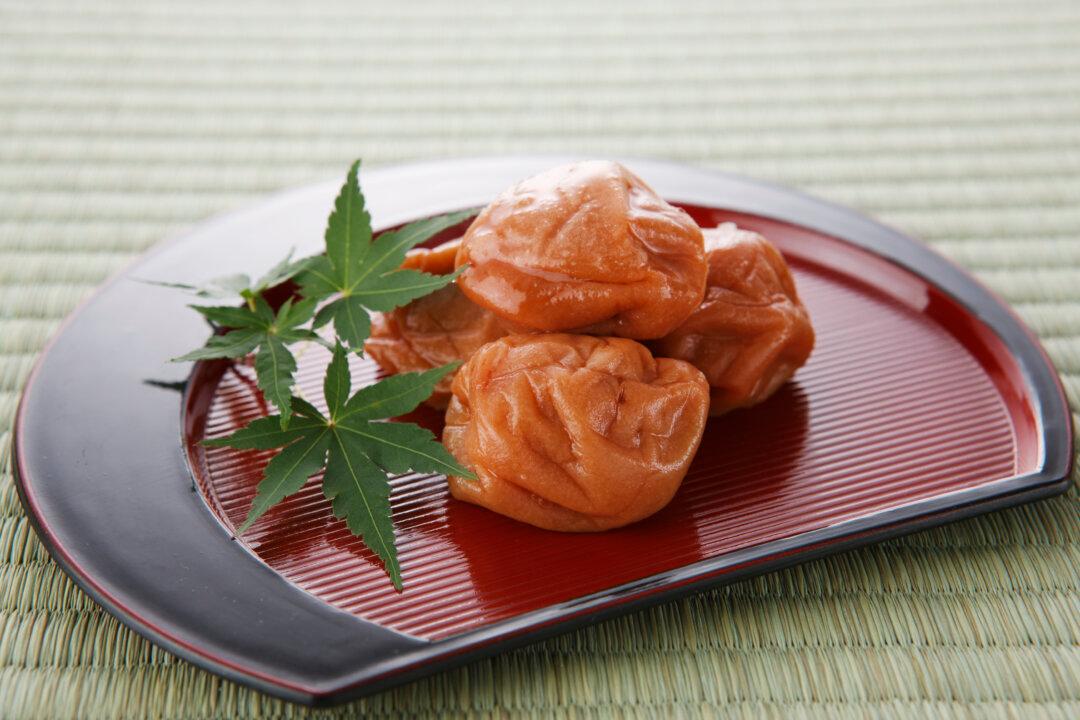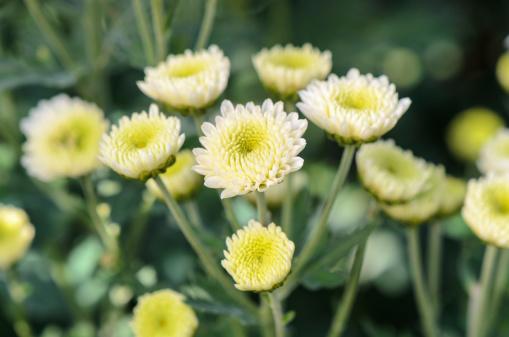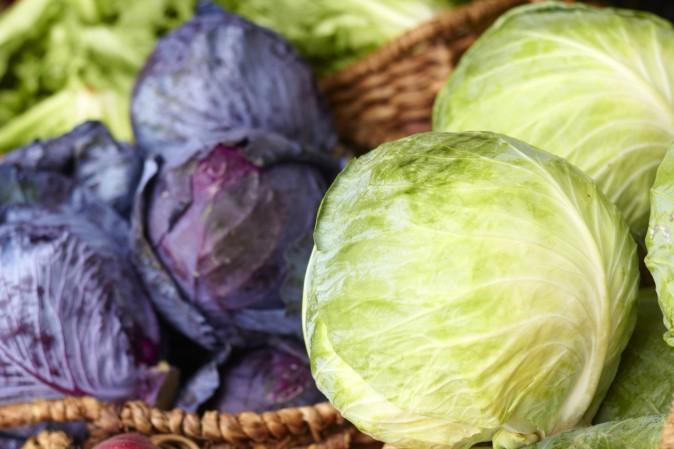Nishime, a Japanese-style waterless stew, is a nourishing all-in-one-pot dish for cold winter evenings. If you enjoy layering the colors and textures of your winter clothing, this versatile dish might just be for you.
Akin to the vegetarian dishes prepared by Chinese Buddhists, nishime was traditionally prepared with a medley of vegetables. Modern recipes also add meat, poultry, or seafood.
If you fancy blending art and cooking, this dish offers you ample opportunity and flexibility. Traditionally it was believed that to engender harmony, nishime should be prepared with an odd number of layers, so you can become a foodie architect and build a three-, five-, or seven-tiered dish.
The two keys for a pleasing-looking dish are color and texture. You can combine crisp, snow-white daikon with bright-orange carrots, or soft, creamy squash with deep-green pieces of chopped cilantro or scallions. Tempeh adds a light-brown tone, dried shitake mushrooms add dark-brown chewiness, and beets add a glorious fuchsia layer.
Applying Ancient Wisdom
There is ancient science and wisdom involved in creating nishime. The layering is based on the yin or yang nature of the vegetables, which the ancient Chinese recognized as important for maintaining optimal health. They felt that foods either had energizing (yang) or calming (yin) properties and planned menus that would help their bodies maintain a balance of yin and yang.
A simple rule of thumb for distinguishing whether a vegetable is yin or yang is the color. White or lighter-colored vegetables tend to be more yin than yellow, orange, and dark-colored vegetables. For example, daikon, turnips, and rutabagas are more yin than carrots and orange-fleshed sweet potatoes.
Dried vegetables are also more yang than fresh ones, so if you use dried, shredded daikon, it will add relatively more yang than fresh daikon.
Another rule to remember is that root vegetables are more yang than vegetables that grow above or away from the ground. Hence, carrots, parsnips, and burdock root are more yang than pumpkins and cabbages, which touch the earth. And pumpkins and cabbages are comparatively more yang than celery and other leafy greens that grow upward and away from the earth.
Rising and Sinking Energies
According to macrobiotic principles, yin is cooling, expanding, rising, and floating energy, whereas yang energy is warming, contracting, and descending. When building your nishime layers, place more yin vegetables like daikon at the bottom of the pot and the denser-energy vegetables such as burdock root and carrots toward the top of the dish.
When arranged this way, the expanding yin energies will rise, while the contracting and denser yang energies will sink or move downward—blending and creating a lovely harmonious balance of yin and yang energies.
It is important not to stir the vegetables during and after cooking. Choose a glass, cast iron, or clay pot if you have one, but if you don’t, you can also use any heavy pot with a tight-fitting lid.
This dish is intended to be served in the cooking pot, and I like the glass pot because it allows me to see the layers. When served this way, the visual effect and the aroma arouse the palate and create greater appreciation for the meal.
Choice of Vegetables
You can use a variety of vegetables for this dish. Carrots, parsnips, daikon, lotus root, sweet potatoes, yams, and kabocha (Japanese squash) are good choices because of their taste and contrasting colors.
You can also use burdock root, yam, turnips, and yellow onion. Consider beet for a splash of vivid fuchsia. You can also add cauliflower, snow peas, green or yellow summer squash, and celery for contrasting color, especially during warmer seasons.
The nishime dish has endless combination possibilities that will hopefully spark your cooking creativity. To start though, you can make this ultra simple, three-tiered recipe.
Three-Tiered Nishime Recipe
• A 3-inch strip of kombu seaweed
• 1 cup daikon sliced into 1-inch-thick half-moon shapes
• 1 cup carrots chopped on the diagonal into 1-inch pieces
• 1 cup kabocha cut into chunks around 1.5 inches long
• Water
• Sea salt
• Chopped cilantro or scallions
1. Soak the kombu in a small amount of water in the cooking pot. When it is soft, cut it into three pieces.
2. As the kombu soaks, chop the vegetables into their respective shapes.
3. Layer the vegetables in the pot, starting with the daikon, then the pumpkin, and the carrots on top.
4. Make sure there is less than half an inch of water at the bottom of the pan because the vegetables will produce more liquid as they cook.
5. Cover the pot and bring water to a boil. Then apply medium heat for 2 to 3 minutes.
6. Reduce flame to low and simmer for about 10 minutes or until the vegetables are tender.
7. Sprinkle a large pinch of salt on the vegetables.
8. Cover the pot and simmer until the vegetables are soft and all the liquid has evaporated.
9. Garnish with chopped scallions and serve with pressure-cooked brown rice.
I usually use sea salt for seasoning instead of miso or shoyu to avoid tinting the vegetables.
You can use different vegetables to add layers to the dish. Or you can substitute one vegetable with another, such as parsnips or fresh lotus root instead of daikon, or sweet potatoes instead of kabocha.
Make sure the vegetables are cut into chunks of different shapes to give texture to the layers. If you use lotus root, slice it about a quarter-inch thick, in full or half moons, to accentuate the distinctive patterns of the holes.
For Chinese New Year last weekend, I created a five-layer nishime dish with parsnips, yellow onion, carrots, beets (the roots) and celery. The beets added a splash of magenta color to our dining table and enhanced the festive occasion.
If you are going to use beets, be prepared that the other vegetables will be bathed in fuchsia. I added the green celery pieces during the last few minutes of cooking to juxtapose with the strong pink and added a few sprigs of cilantro to perk up the dish.
Healing Benefits
Vegetables layered and stewed this way produce a calming and balancing effect. Nishime is nourishing, strengthening, and warming on cold winter days. Because it is made of root vegetables, nishime nourishes the stomach, spleen, and other internal organs below the waist.
Since nishime is cooked in very little water, the vegetables retain their flavor and nutrients.
Dr. Margaret Trey has a doctorate in counseling from the University of South Australia. She was trained in oriental medicine, shiatsu, and macrobiotics, and worked as a wellness counselor for over 20 years. Now based in New York, Dr. Trey writes and continues researching the effects of meditation on health and wellness.

